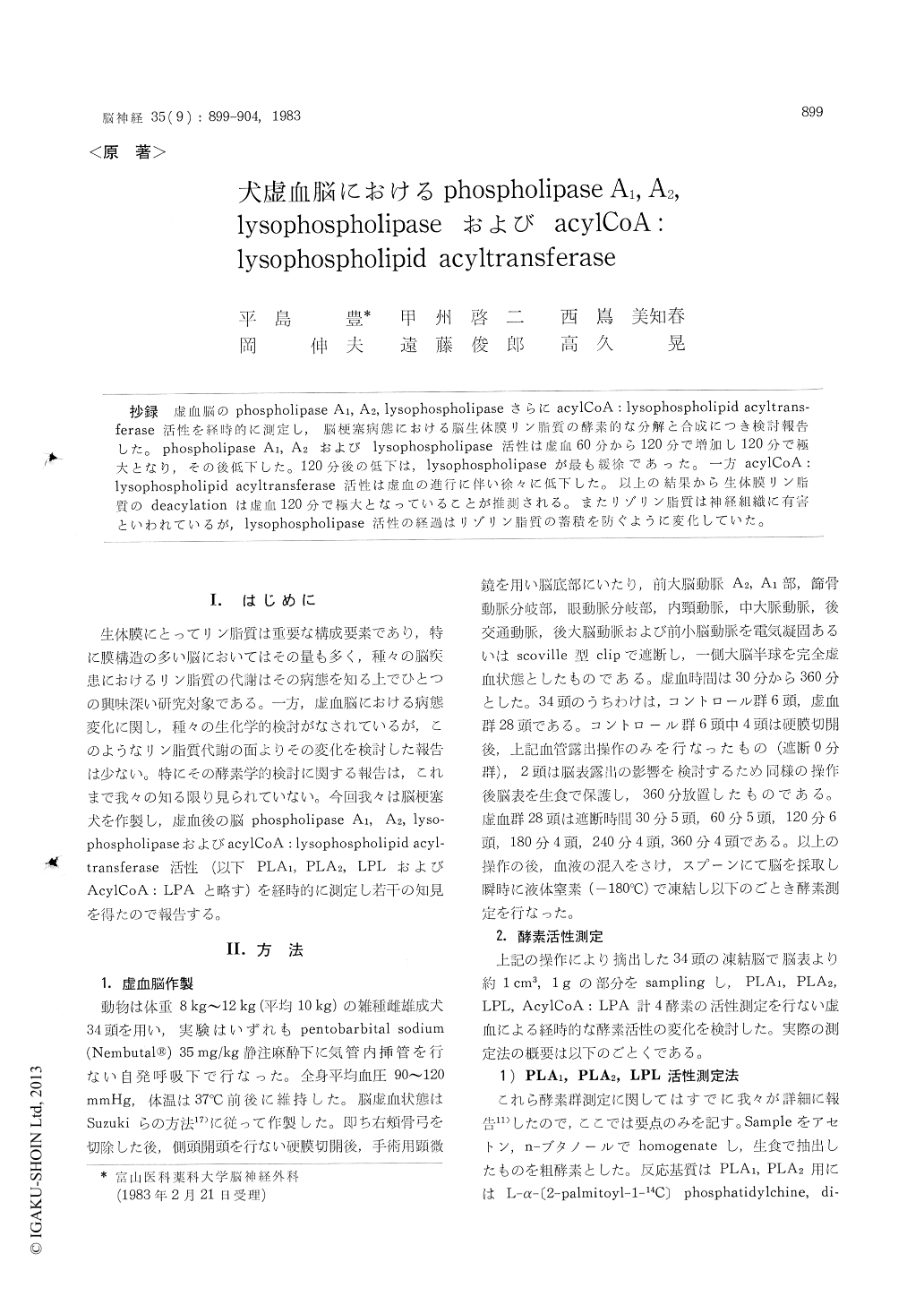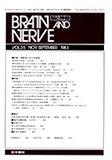Japanese
English
- 有料閲覧
- Abstract 文献概要
- 1ページ目 Look Inside
抄録 虚血脳のphospholipase A1,A2,lysophospholipaseさらにacylCoA:lysophospholipid acyltrans—ferase活性を経時的に測定し,脳梗塞病態における脳生体膜リン脂質の酵素的な分解と合成につき検討報告した。Phospholipase A1,A2およびlysophospholipase活性は虚血60分から120分で増加し120分で極大となり,その後低下した。120分後の低下は,lysophospholipaseが最も緩徐であった。一方acylCoA:lysophospholipid acyltransferase活性は虚血の進行に伴い徐々に低下した。以上の結果から生体膜リン脂質のdeacylationは虚血120分で極大となっていることが推測される。またリゾリン脂質は神経組織に有害といわれているが,lysophospholipase活性の経過はリゾリン脂質の蓄積を防ぐように変化していた。
In this report, the sequential changes of phos-pholipase A1, A2, lysophospholipase and acylCoA : lysophospholipid acyltransferase activities in ischemic dog brain were investigated.
The purpose of this study was to examine the enzymic changes of deacylation-reacylation cycle of biomembrane phosphlipid in ischemia.
Hemispheric non-blood supply models were produced by occlusion of main intracranial trunk arteries in dogs according to Suzuki's method. The sample was spooned out and frozen immedia-tely with liquid nitrogen at the predetermined time. The assay of phospholipase A1, A2 and lyso-phospholipase activities was done by our method and acylCoA : lysophospholipid acyltransferase activity was according to Corbin and Sun's method.
The activities of phospholipase A1, A2 and lysophospholipase did not show significant changes within 60 minutes after arterial occlusion. However these activities showed significant high value at 120 minutes and decreased gradually after then. On the other hand, acylCoA : lysophospholipid acyltransferase activity showed gradual decrease. These findings show that enzymic degradiation of acyl group of phospholipid in the brain is high-est at about 120 minutes after complete ischemia.
The importance of acyl groups of phospholipids for biomembrane structure and the function is well recognized. The turnover of these acyl groups in normal brain biomembrane is also well known. Some types of enzymic system related to this turnover has been investigated. Phospholipase A1, A2, lysophospholipase and acylCoA : lysophospho-lipid acyltransferase belong to these enzymic systems.
There have been some reports that the content of free fatty acids in the ischemic brain increases in early stage. This event may occur due to unbalance of these enzymic systems. The present results may suggest that the cause of increase of free fatty acids in ischemic brain is the decline of reacylation enzymes.
Small amounts of lysophospholipid are normally present in brain tissue. During ischemia this compouns also increase in brain. Lysophospholipidshave the cytolitic and solubilizing action to nervous tissue and inhibit acylCoA : lysophospholipid acyltransferase in high concentration. Our results showed that in the ischemic state, the activation of lysophospholipase was initially paralleled to those of phospholipase A1 and A2 which acce-lerated the accumulation of lysophospholipids.However, it was shown that the decreased activity of lysophospholipase was the slowest of the three enzymes in the prolonged occlusions of more than 120 minutes. These results suggested that the neural tissue have a mechanism which defends itself by hydrolyzing the lysophospholipids.

Copyright © 1983, Igaku-Shoin Ltd. All rights reserved.


